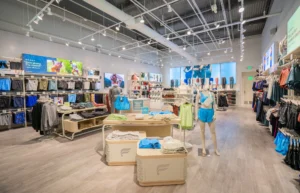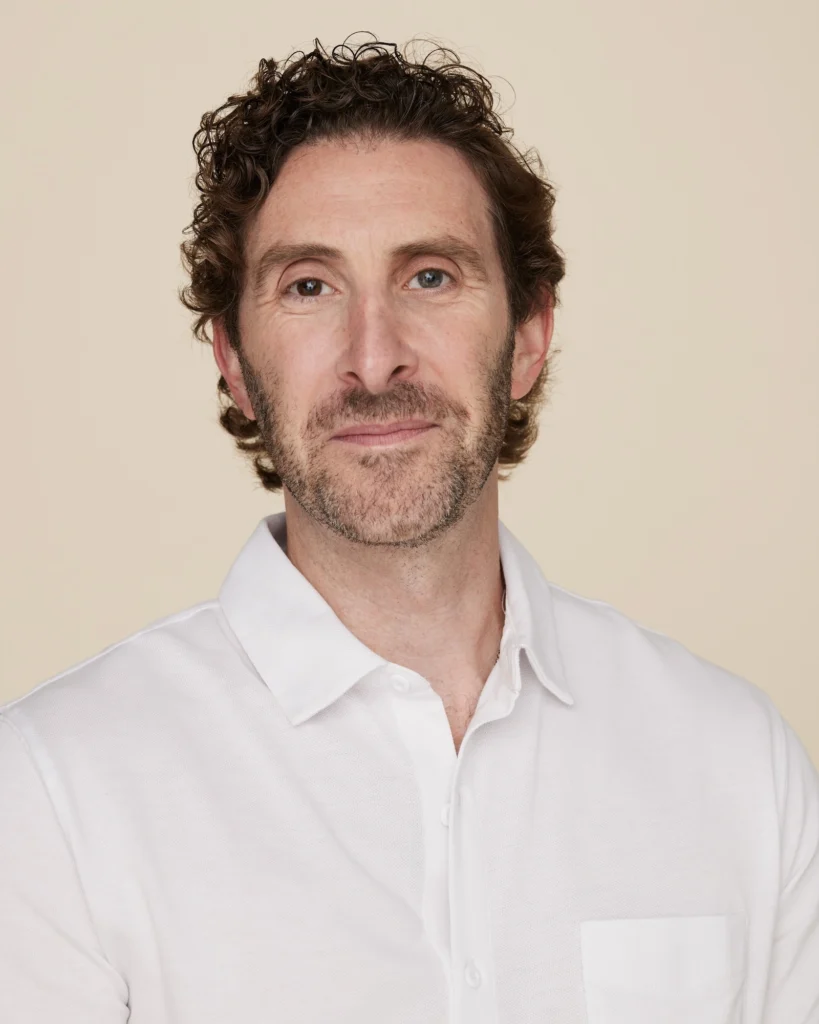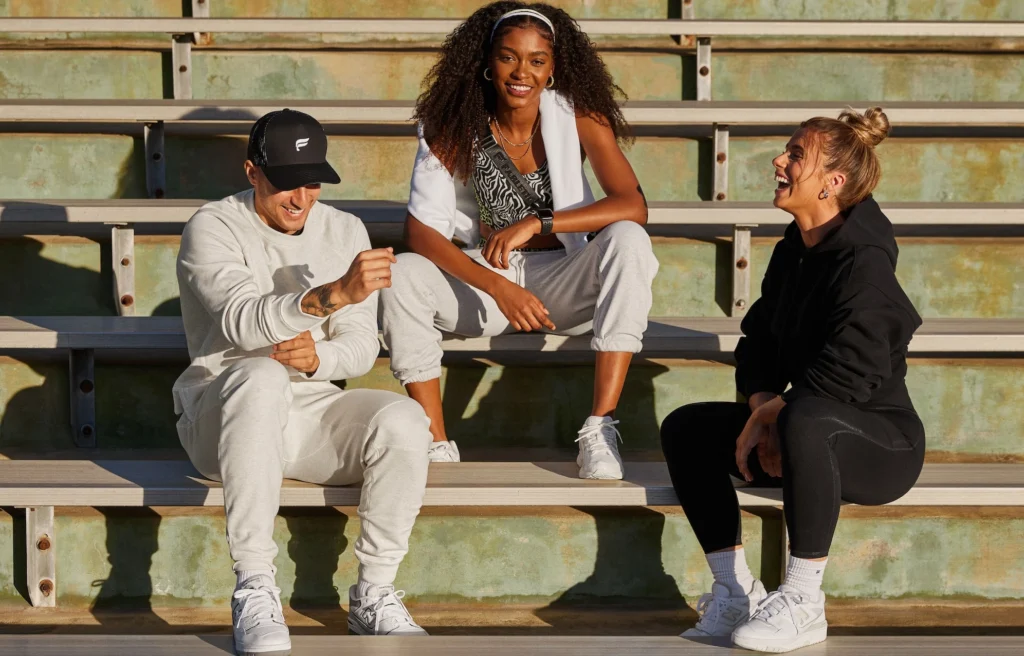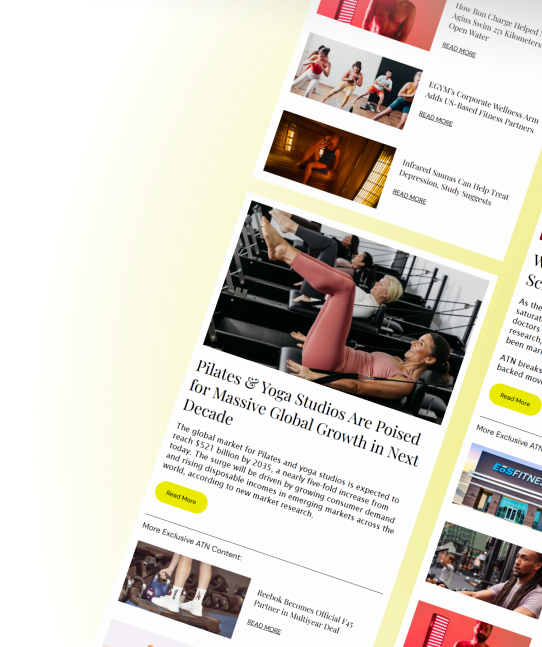
Over the next five years, Fabletics aims to double its sales by expanding into new categories and targeting international markets, Adam Goldenberg tells ATN
Fabletics has become one of the biggest brands in activewear, challenging traditional players like Nike, Adidas and Lululemon with pieces that are fashion-forward and available for a fraction of the price of competitors.
In 2024, Fabletics did around $850 million in sales, buoyed by new product launches, celebrity partnerships and a strong loyalty program. In the years ahead, the California-based activewear brand has its sights set even higher, aiming to double in size and become a global powerhouse.
“We’re looking to more than double the business over the next five years,” Fabletics CEO Adam Goldenberg tells Athletech News.
Goldenberg sat down with ATN to discuss Fabletics’ rise to the top of the activewear market and outline the brand’s strategy for growth in the years ahead, including a push into new apparel categories and international expansion.
Inside Fabletics’ Rise to the Top
Founded in 2013 by Goldenberg and husband-and-wife duo Don and Ginger Ressler, Fabletics was created to fill a gap in the women’s market for high-performance activewear at an affordable price point.
“We just had this fundamental belief that the world’s best leggings shouldn’t cost $100,” Goldenberg recalls.

Goldenberg and the Resslers also wanted to bring some creativity and color to the women’s activewear space, which they felt was too stale in the early 2010s.
“If you could go back in a time machine and look at women’s activewear in 2011, it was boring. It was black, navy and gray,” Goldenberg notes. “There was no fashion, no fashion collaborations, no colors, no prints. We really felt we could introduce fashion into the category.
While things have evolved a bit since then, Fabletics’ women’s line still features leggings, sports bras and other activewear pieces offered in bold colors like bright pink and patterns including cheetah print.
In 2020, Fabletics partnered with Kevin Hart to launch a menswear line, encouraged by feedback from the brand’s many female customers who were seeking something to buy for their significant other. Hart has since become synonymous with Fabletics, starring in catchy TV commercials and social media campaigns.
“We look for partners that we feel match the brand,” Goldenberg says of Fabletics’ affiliation with the popular comedian. “Kevin is in incredible shape, and an athlete in his own right. But he’s also fun and approachable, which is a big part of the DNA of our brand.”
Menswear currently makes up around 33% of Fabletics’ total revenue, so the expansion has proved fruitful.

Thinking Smarter About Customer Loyalty
In activewear circles, Fabletics might be best known for its VIP membership program, a loyalty program that allows customers to get big discounts on products and access to exclusive drops. VIP members can pay an optional $59.95 monthly membership fee to receive credits on Fabletics pieces.
Fabletics has around 3 million customers, 80% of whom are VIP members, according to the brand. Besides driving customer loyalty, the VIP program gives Fabletics access to massive amounts of data on its customers, which the brand leverages in creative ways through online sales, digital marketing and inside its 100-plus brick-and-mortar stores.
“The benefit to us as a company is when people become a member, we get a lot of data, and we use that data to buy the right inventory,” Goldenberg explains. “We really have no inventory obsolescence, which helps us from a margin standpoint and allows us to pass great savings on to our customers.”
Fabletics also uses data to see around the corner on product development. For example, the brand launched a scrubs line in 2023 after noticing that hundreds of thousands of its VIP members were wearing scrubs to work.
To make sense of all this data, Fabletics spends big bucks on its tech stack, including a platform called Fashion OS and an app called Fabletics FIT that features on-demand workouts from personal trainers.
“For a company our size, we probably invest five to 10 times more in technology than our peers, and we see those investments that pay off over the long haul,” Goldenberg says.

Still, for all Fabletics’ emphasis on data and tech, Goldenberg is quick to point out that quality is king when it comes to building a successful activewear brand. He proudly points out that Fabletics’ number one source of new customers is referrals from existing customers.
“You can make a business as complicated as you want, but at the heart, we’ve developed a really great product that people love,” he says, adding that the company remains “maniacal” about finding the best-performing and most comfortable activewear fabrics at the lowest possible price.
Five-Year Plan: International Growth & Category Expansion
Fabletics isn’t planning on slowing down anytime soon. Goldenberg believes the brand can double in size by 2030, which would put Fabletics at around $1.7 billion in sales.
To do so, the brand wants to push the boundaries of what’s possible for an activewear company. That includes expanding into new apparel categories – and new territories.
“We have a couple more major category expansions in development that we’re quite excited about,” Goldenberg says, including something slated to “launch toward the back half of this year.”
On the international expansion front, Fabletics is aiming to become a “global brand.”
The brand already has a presence in Western Europe and is set to enter the Mexican market in a big way in 2025 following a partnership with Liverpool, a Mexico-based omnichannel retail group. Over the next five years, Fabletics plans to explore expansion into additional regions including Central America, South America, Australia and the Middle East.
“International today is about five to seven percent of the business, so it’s still relatively small,” Goldenberg says. “We think that’s going to grow at a pretty fast clip over the next five years.”

